Alazawy, Ahmed (2024) Effectiveness of Supervised and Unsupervised algorithms in detecting RAPs in Wireless Networks. Masters thesis, Dublin, National College of Ireland.
Preview |
PDF (Master of Science)
Download (711kB) | Preview |
Preview |
PDF (Configuration Manual)
Download (1MB) | Preview |
Abstract
In this paper, the performance of supervised and unsupervised ML Classifiers in identifying RAPs in wireless networks are discussed. Our research focuses on the main research question which fueled this research project and guided the development which is "How do unsupervised algorithms like Isolation Forests and One-Class SVMs compare in their effectiveness at detecting Rogue Access Point attacks in Wi-Fi networks compared to other Supervised Algorithms?". To answer the above research questions, we utilized the AWID public dataset, which consists of labeled and unlabeled data of Wi-Fi networks. The research shows that the techniques Isolation Forest and One-Class SVM while applying unsupervised learning have the anomaly detection capability but lack accuracy and reliability as compared to supervised learning techniques. However, in term of accuracy, precision, recall and F1 two supervised models of Random Forest and Supervised SVM performed better than the rest models. This study contributes to the future work in cybersecurity by mapping the areas of unsupervised learning in network security and asserting that supervised learning models are effective. Besides, it contributes to the literature on the use of machine learning in network security and lays the groundwork for further research that might examine further hybrid models in detecting rogue access points or even better feature engineering techniques or using a more complex dataset.
| Item Type: | Thesis (Masters) |
|---|---|
| Supervisors: | Name Email McLaughlin, Eugene UNSPECIFIED |
| Subjects: | Q Science > QA Mathematics > Electronic computers. Computer science T Technology > T Technology (General) > Information Technology > Electronic computers. Computer science Q Science > QA Mathematics > Computer software > Computer Security T Technology > T Technology (General) > Information Technology > Computer software > Computer Security Q Science > Q Science (General) > Self-organizing systems. Conscious automata > Machine learning |
| Divisions: | School of Computing > Master of Science in Cyber Security |
| Depositing User: | Ciara O'Brien |
| Date Deposited: | 29 Jul 2025 09:57 |
| Last Modified: | 29 Jul 2025 09:57 |
| URI: | https://norma.ncirl.ie/id/eprint/8288 |
Actions (login required)
 |
View Item |

 Tools
Tools Tools
Tools